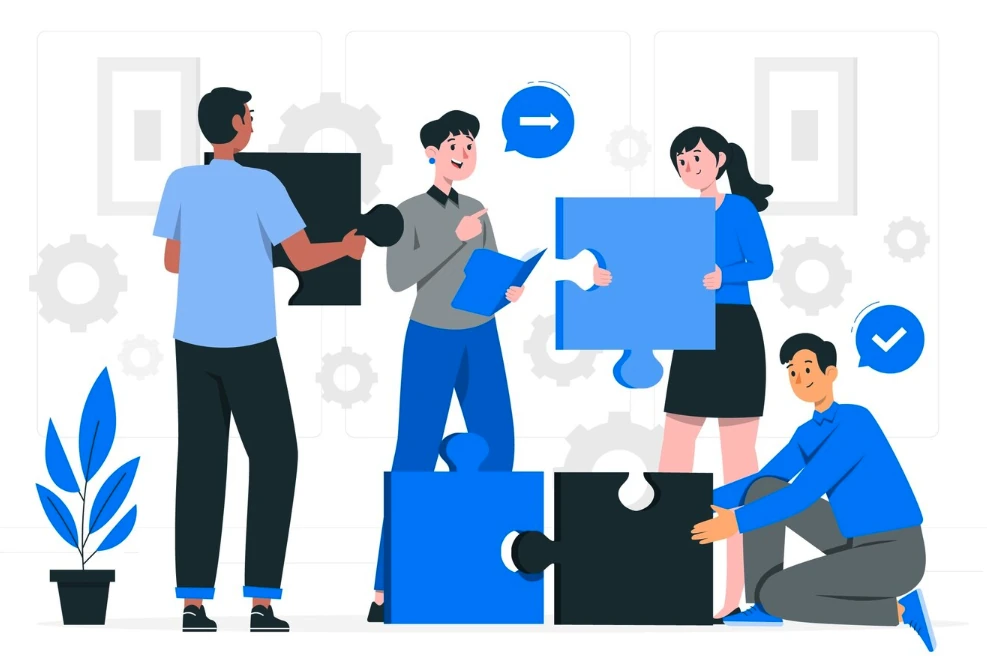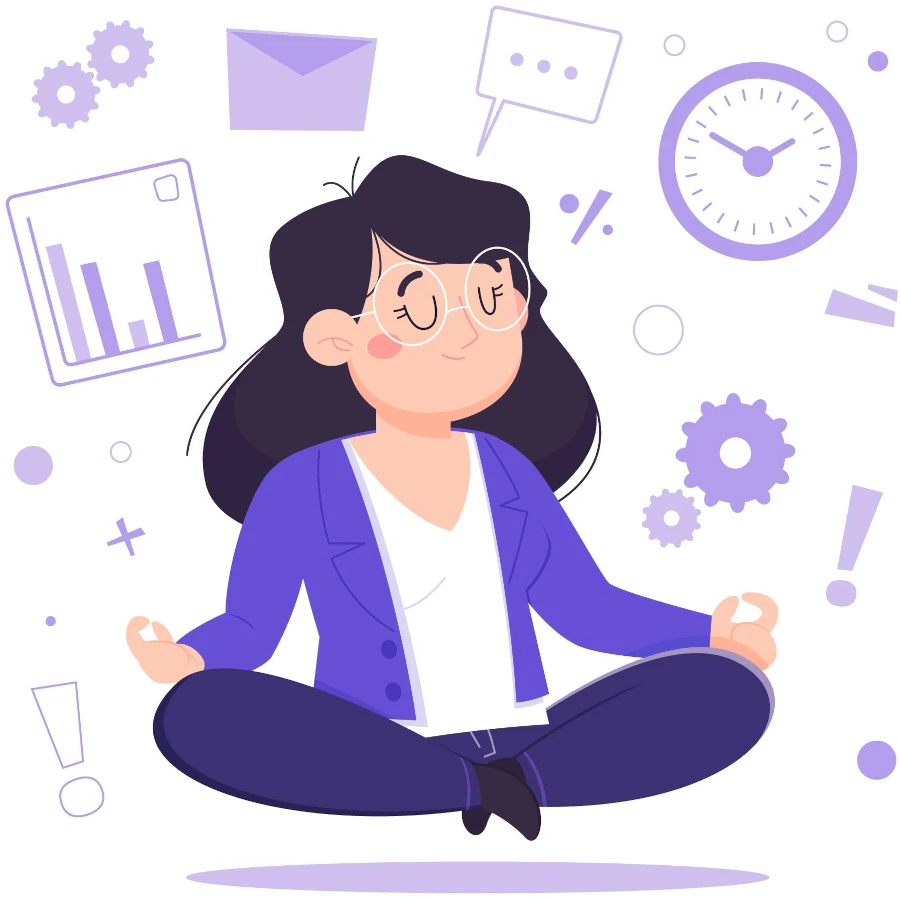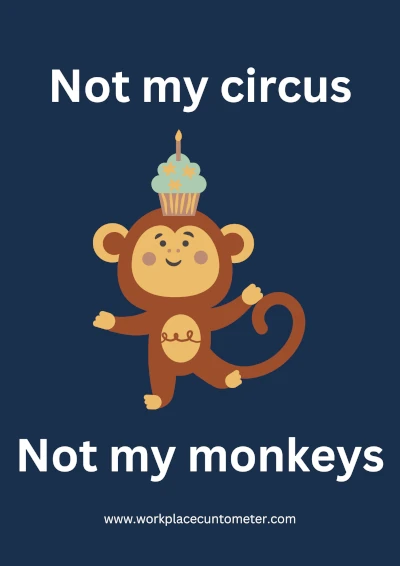Fuck the Chaos: Mindfulness Techniques for Keeping Your Shit Together at Work

Why Your Brain Is a Mess at Work
Your workplace can be a psychological war zone. Between the constant notifications, the colleague who won't shut up about her weekend, and the manager who keeps moving deadlines like they're playing calendar Tetris, your brain doesn't stand a fucking chance.
The modern work environment is essentially a laboratory designed to shatter attention and maximize stress. The average office worker checks email 74 times a day, gets interrupted every 11 minutes, and takes 23 minutes to get back on task after each distraction. By mid-afternoon, your brain feels like it's been put through a blender and served with a side of anxiety.
The consequences go beyond just feeling frazzled. Chronic workplace stress contributes to everything from heart disease to depression, not to mention the immediate effects of making poor decisions, snapping at colleagues, and producing work that's mediocre at best. And those company-sponsored happy hours and pizza parties aren't fixing the fundamental problem: your brain is overwhelmed, and nobody's teaching you how to manage it.
Enter mindfulness – think of it as a mental survival skill for the corporate battlefield and tactical training for your mind. Because in a world designed to fragment your attention and hijack your emotions, the ability to control your own mental state isn't just nice to have – it's a superpower.
What is Mindfulness Anyway?
At its core, mindfulness is simply the practice of paying attention to what's happening right now, without immediate judgment, and with the intention to stay present.
That's it. No crystals required. No need to say “namaste” to the printer.
In practical terms, mindfulness means noticing when your mind has wandered off to worry about that presentation next week instead of focusing on the task at hand. It means recognizing when you're reacting emotionally to an email rather than responding thoughtfully. It means being aware of the physical sensations of stress in your body before you reach the point where you're ready to tell your boss to go fuck themselves.
What mindfulness isn't: a way to make you complacent or accepting of workplace bullshit. It's not about suppressing negative emotions or pretending everything is fine when it isn't. It's not about forcing yourself to be calm when righteous anger is appropriate.
Instead, think of mindfulness as giving yourself a moment of choice between stimulus and response. That pause – even if it's just a few seconds – is where your power lies. It's the difference between sending that career-ending email and taking a breath first. It's what allows you to notice that your coworker might be acting like an asshole because they're going through a divorce, not because they're targeting you personally.
Mindfulness is situational awareness of your mental state. And in the corporate world, that awareness might be the difference between thriving and burning out.
Mindfulness Red Flags: When You Need This Shit Most
Mindfulness becomes essential when you notice these warning signs:
You've read an email three times and still don't know what it says
You drove to work but can't remember the journey
You're constantly startled when colleagues approach your desk
You've been in back-to-back meetings but can't recall key decisions
You catch yourself checking social media without remembering opening the app
Minor inconveniences trigger disproportionate emotional responses
You're making uncharacteristic mistakes in routine tasks
Your thoughts immediately race to worst-case scenarios
Physical tension headaches, jaw clenching, or shoulder pain have become your normal
You feel perpetually behind despite working longer hours
The Science: Why This Shit Actually Works
If you're the skeptical type who needs more than vague promises about “being present,” good news: mindfulness has been put through the scientific wringer, and the results are pretty fucking impressive.
Let's start with your brain on stress. When you're constantly bombarded with workplace demands, your amygdala (the brain's alarm system) goes into overdrive. It floods your system with stress hormones like cortisol and adrenaline, which is great if you need to outrun a predator but terrible for making strategic decisions or managing complex relationships. Prolonged exposure to these stress hormones literally changes your brain structure, shrinking the prefrontal cortex (responsible for rational thinking) and enlarging the amygdala (making you even more reactive to stress).
Enter mindfulness. MRI scans show that after roughly eight weeks of regular mindfulness practice, the amygdala shrinks while the prefrontal cortex becomes more active and develops more neural connections. Translation: you become less reactive to stress and better at complex thinking. It's like upgrading your mental hardware.
But the benefits don't stop there. Research published in peer-reviewed journals has found that mindfulness:
Improves focus and attention
A study at the University of Washington found that mindfulness training led to less task-switching and longer attention spans among HR professionals.
Enhances working memory
Research published in Psychological Science showed that mindfulness meditation improved participants' working memory capacity, which directly affects your ability to juggle multiple tasks.
Reduces emotional reactivity
A study in the journal ‘Emotion’ demonstrated that mindfulness practice helps people disengage from emotionally upsetting pictures and enables better emotional regulation in response to stress-inducing situations.
Boosts creativity
Research in the Journal of Business Venturing found that mindfulness enhances creativity and innovation by reducing cognitive rigidity.
Improves decision-making
A study published in Psychological Science showed that even brief mindfulness exercises helped people avoid “sunk cost bias” – the tendency to continue investing in something that's clearly failing just because you've already put resources into it.
Reduces burnout
This is perhaps most relevant to the workplace hellscape: mindfulness has been shown to significantly reduce burnout among professionals in high-stress environments. A study of healthcare providers found that those who participated in mindfulness programs experienced substantial reductions in burnout and psychological distress compared to control groups.
The science is clear: this isn't just spiritual placebo effect. Mindfulness literally rewires your brain to be more resilient to the exact challenges that make modern work so mentally taxing.

Five-Minute Mindfulness: Techniques for When You're Drowning in Work
Great, so mindfulness works. But who has time to meditate for an hour when your inbox looks like it's been hit by a digital shitnado and your manager keeps “just checking in” on that project? The good news is that even brief mindfulness practices can make a significant difference. Here are some techniques you can do in five minutes or less without anyone even noticing you're doing them:
The Three-Breath Reset
When you feel yourself getting overwhelmed, take three deliberate breaths. Make the exhale longer than the inhale. That's it. This activates your parasympathetic nervous system (the “rest and digest” mode) and takes you out of fight-or-flight. Do this before responding to an irritating email, walking into a meeting, or whenever you feel your stress rising.
The Body Scan
Start at your feet and mentally work your way up your body, noticing areas of tension. When you find tight muscles – usually in the shoulders, jaw, or forehead – consciously relax them. This takes 30 seconds and can be done while sitting at your desk looking like you're deeply contemplating a spreadsheet.
The STOP Technique
When you catch yourself spiraling, mentally say “STOP.” Then:
This creates a crucial pause between stimulus and response, giving you back control.
The Sensory Anchor
When your mind is racing with work worries, deliberately focus on your senses. Notice five things you can see, four things you can hear, three things you can feel, two things you can smell, and one thing you can taste. This forces your brain back to the present moment.
Mindful Listening
During your next meeting, challenge yourself to really listen to whoever is speaking instead of planning what you'll say next or checking email under the table. Notice when your mind wanders (it will) and gently bring it back to the speaker. This not only improves your comprehension but also makes the other person feel valued.
The Email Pause
Before checking your email, take three breaths and set an intention to respond rather than react. After reading each message, pause for a second before moving to the next one. This tiny gap prevents the messages from blurring together into one anxiety-inducing mass.
Micro-Meditation
Set a timer for one minute. Close your eyes (or lower your gaze) and focus solely on the sensation of your breath entering and leaving your nostrils. When your mind wanders, gently bring it back to your breath. Even this brief practice has been shown to activate the parasympathetic nervous system.
The beauty of these techniques is that they can be integrated into your workday without requiring extra time. They're stealth weapons against workplace chaos that nobody needs to know you're deploying.

Mindful Communication: Dealing with Workplace Assholes
Let's be honest: sometimes the biggest source of workplace stress isn't your workload—it's the people. The micromanager who hovers over your shoulder. The colleague who throws you under the bus in meetings. The client who treats you like their personal servant. These interactions trigger your threat response faster than a saber-toothed tiger could in prehistoric times.
Mindfulness won't make these people less difficult, but it can dramatically change how their behavior affects you. Here's how to apply mindfulness principles when dealing with the full spectrum of workplace assholes.
First, recognize the physical signs that someone is triggering you. Does your heart rate increase? Do your palms sweat? Does your jaw clench? These bodily sensations often precede your emotional reaction. By noticing them early, you create space to choose a response rather than going straight to fight-or-flight.
When triggered, use the RAIN method:
This process disrupts the automatic cycle of reaction that difficult people tend to provoke.
Practice perspective-taking instead of mind-reading. When someone acts like a prick, our natural tendency is to attribute it to their character (“They're an asshole”) rather than circumstances (“They might be under pressure I don't know about”). Mindfulness helps you recognize when you're making assumptions about others' intentions.
For recurring difficult interactions, try the mental practice of “difficult conversation mapping.” Before the interaction, mindfully note your physical sensations, emotional state, and thoughts. During the conversation, maintain awareness of how these change. Afterward, reflect on what triggered reactions. This creates a map of your hot buttons that you can use to prepare for future encounters.
When receiving criticism (justified or not), try the mindful pause: take a breath, listen fully without planning your defense, then respond with “Thank you for that feedback. I'd like to consider it and get back to you.” This prevents defensive reactions while giving you time to process.
For those maddening passive-aggressive colleagues, practice direct, non-reactive questioning: “I notice there seems to be some tension. Is there something specific we should discuss?” Delivered with genuine curiosity rather than accusation, this can disarm the passive-aggressive dynamic.
Remember that mindful communication doesn't mean being a doormat. Sometimes the most mindful response is setting a clear boundary: “I understand you need this urgently, but I'll need until tomorrow to do it properly.” Delivered from a centered state rather than reactive frustration, such boundaries are more likely to be respected.
The goal isn't to never feel annoyed or angry at work—that would be superhuman. The goal is to stop letting difficult people hijack your mental state for hours after a thirty-second interaction. Their behavior is their responsibility; how long you let it affect you is yours.
Digital Detox: Unplugging Your Brain from the Matrix
If workplace stress were a movie villain, technology would be its loyal henchman. Your devices have essentially been engineered to hijack your attention, fragment your focus, and keep you in a state of constant reactive alertness—the opposite of mindfulness.
The average knowledge worker checks email 74 times daily and picks up their phone 150 times. Each of these micro-distractions isn't just consuming time—it's draining your mental resources and reinforcing patterns of scattered attention.
You need strategies to coexist with technology without letting it colonize your consciousness. Here's how mindfulness can help you reclaim your brain from the digital onslaught:
Implement the “notification audit”:
Take 20 minutes to go through every app on your phone and computer and ask, “Does this notification serve me, or do I serve it?” Turn off everything that doesn't genuinely require immediate attention. Your work Slack probably needs to stay on; Instagram likes can wait.
Practice “tech transitions”:
Before checking email or other inputs, take three conscious breaths. This creates a mental boundary between activities and prevents the reactive autopilot that digital tools tend to trigger.
Adopt “batch processing” for communications:
Rather than responding to each email, Slack, or text as it arrives, designate specific times to process them in batches. Research shows this reduces the cognitive load of constant task-switching and decreases stress.
Create technology-free zones and times:
Maybe your phone stays out of the bedroom, or you don't check email until you've completed your most important morning task, or social media is banned during lunch breaks. These boundaries prevent digital tools from invading every moment of your life.
Try the “10-minute rule” for digital cravings:
When you feel the urge to check your phone or email without a specific purpose, wait 10 minutes. Often, the urge will pass, revealing it as the addiction response it actually is.
Use technology mindfully:
Before opening any app, pause and ask, “What is my intention here?” This simple question can disrupt unconscious habits and help you use technology purposefully rather than reflexively.
Practice “single-tasking”:
Challenge the myth of multitasking by fully focusing on one digital task at a time. Close unnecessary tabs, put your phone away, and give your complete attention to the task at hand. The productivity gains from reduced task-switching far outweigh the illusion of doing multiple things simultaneously.
Experiment with digital sabbaticals:
Start small—perhaps a few hours on the weekend—and gradually work up to longer periods unplugged. Many people report that even brief digital detoxes significantly reduce anxiety and improve mental clarity when they return to work.
Remember that technology is designed to be addictive. The companies behind your devices and apps employ armies of psychologists and designers specifically to keep you engaged and coming back for more. This isn't a fair fight—your mindful awareness is up against billions of dollars of research into behavioral manipulation. Don't beat yourself up for struggling; instead, recognize that managing your relationship with technology is an ongoing practice.
By bringing mindfulness to your digital consumption, you can transform technology from a source of fragmentation and stress into a tool that genuinely serves your work and well-being. The goal isn't digital abstinence—it's digital agency.
Beyond Crisis Management: Building a Sustainable Mindfulness Practice
There's a common pattern with workplace mindfulness: people get interested when they're on the verge of a breakdown, practice it intensively until the crisis passes, then promptly forget about it until the next emergency. This cycle of crisis and recovery is better than nothing, but it's like only taking medicine when you're already severely ill rather than maintaining your health daily. This cycle of shit does need to be broken, and you can do it.
Building a sustainable mindfulness practice isn't about dramatic life overhauls or hour-long meditation sessions (unless that's your thing). It's about weaving small moments of awareness into the fabric of your workday until mindfulness becomes your default operating system rather than an emergency response protocol when shit’s hitting the fan.
And it should go without saying - avoid unnecessary office bullshit. Don't buy into drama, and don't engage with dickheads who are trying to create drama. Repeat this mantra “Not my circus, not my monkeys.” Or another one “Not my pig, not my farm.” Or make one up that works for you and gives you a laugh.

Remember that mindfulness is a skill, not a destination. Even experienced practitioners don't maintain perfect awareness—they just notice more quickly when attention has wandered and bring it back with less judgment. The measure of progress isn't the absence of distraction but the growing space between stimulus and response.
By building a sustainable practice, mindfulness becomes less something you do and more a way you are. The cumulative effect transforms not just how you handle stress but how you experience work itself—less as something to endure and more as a series of moments you're fully present for, by choice.